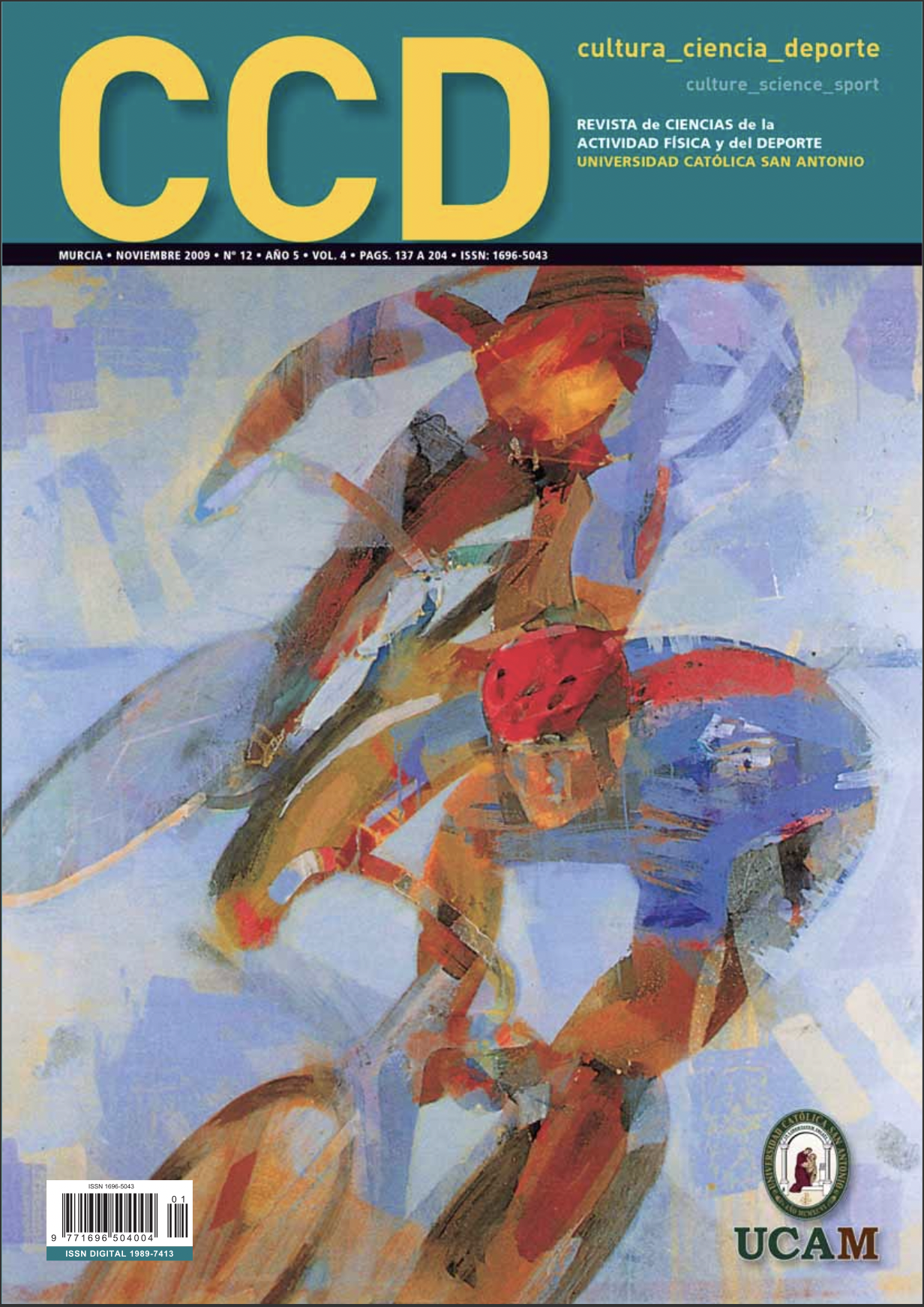Características y efectos de los métodos resistidos en el sprint. (Characteristics and effects of resisted sprint training methods).
DOI:
https://doi.org/10.12800/ccd.v4i12.146Resumen
Para la mejora del rendimiento en el sprint se utilizan distintos métodos de entrenamiento, entre los más populares se encuentran los métodos resistidos. Un método resistido para el sprint se caracteriza por utilizar sprints con una sobrecarga o resistencia añadida. Dependiendo de las características del dispositivo, tanto la magnitud como la dirección de la resistencia va a ser diferente. Así, existen distintos tipos de métodos resistidos, estos son: arrastres de trineos o ruedas, lastres de chalecos o cinturones, arrastres de paracaídas, carreras cuesta arriba, e incluso carreras sobre la arena de la playa. El principal objetivo al usar métodos resistidos es mejorar la fuerza específica de los deportistas sin producir una modificación significativa de la técnica del deportista. En el presente trabajo se revisan las características y efectos de los métodos resistidos tanto de forma aguda, como sus efectos a corto, medio y largo plazo.
Palabras clave: Rendimiento, fuerza, velocidad, carrera.
===
Abstract
There are different training methods for improving sprint performance, and resisted sprint training methods are one of the most popular. Sprint resisted methods are characterized by executing sprints with an added load. The direction of the resistance applied to the athlete is different for each device, and so each device has different effects on the athlete’s velocity and sprinting mechanics. Thus, there are different resisted sprint training methods, which are: sled or tire towing, weighted belt/vest, speed parachutes, up-hill sprinting, and sand sprinting. The main purpose when using resisted methods is to improve an athlete’s specific-strength, or, to achieve the greatest exercise specificity, such that the athlete’s movement patterns should remain similar to those observed in unloaded sprinting. Therefore, the acute, short-, medium-, and long-term effects of resisted sprint training methods are reviewed in the present paper.
Key words: Performance, strength, velocity, running.
Descargas
Cómo citar
Número
Sección
Licencia
Los autores que publican en esta revista están de acuerdo con los siguientes términos:- Los autores conservan los derechos de autor y garantizan a la revista el derecho de ser la primera publicación del trabajo al igual que licenciado bajo una Creative Commons Attribution License que permite a otros compartir el trabajo con un reconocimiento de la autoría del trabajo y la publicación inicial en esta revista.














